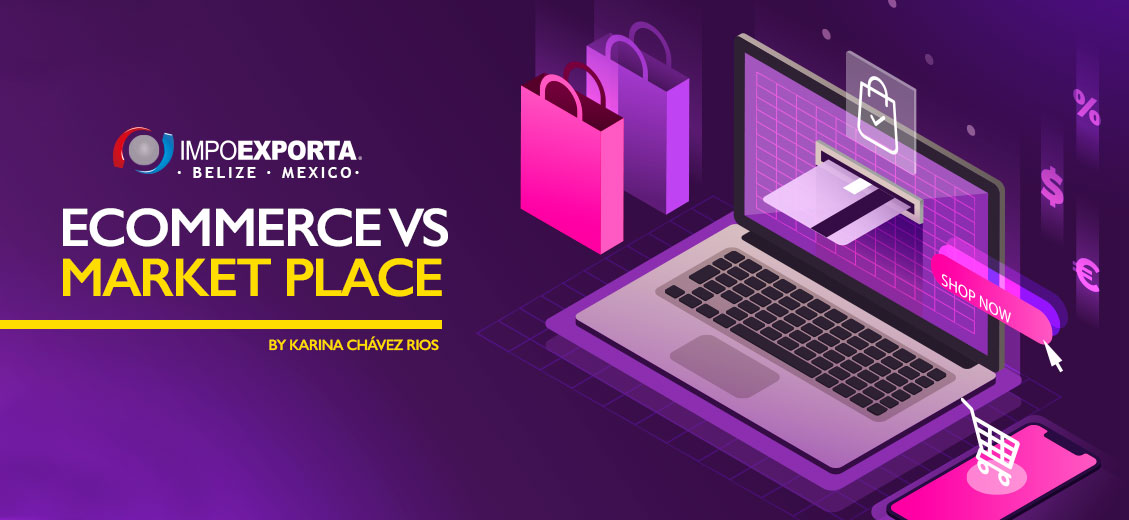The importance of NOM for consumers.
21 September, 2019
Let's start by defining what is ecommerce or electronic commerce? It is as simple as buying or selling products and / or services through the internet. On average 40 percent of the world's population has an internet connection. According to a report by the Mexican Internet Association (AMIPCI), in Mexico, 51.2 million people are frequent internet users, and the market for online sales of products and services has an estimated value of 121 billion pesos.
According to AMIPCI, global e-commerce revenues are estimated to exceed 2 trillion dollars by 2020 and e-commerce transactions are estimated to increase by 30% annually by 2020.


But what does all this mean for your business? In a simple way, we could say that having a website to promote your product or service will turn your business into a virtual store, available and open 365 days a year, 24 hours a day. In addition, it will allow you to form a client portfolio that could even be found on the other side of the planet. It's basically putting your sales a click away.
Today two terms are known "Ecommerce and Marketplace" What is the difference? When we talk about E-commerce we are linking to a domain from where to market our products, articles or services. Whatever its nature and origin. A physical space is not necessary, however E-commerce is a complement to your existing physical store.
The Marketplace, on the other hand, is a site where products or items are offered by its marketers with the main objective of being bought or acquired by consumers. This is a small nuance that can be distinguished with the concept of digital store. To understand it more easily: it is a market applied to the digital format. A clear example of Marketplace are pages such as Mercado Libre, Ebay, Amazon, Alibaba, Aliexpress, Linio among others.
The clearest difference is that the e-commerce or online store is dedicated to selling products, while the Marketplace serves as a platform for buyers and sellers to make their deals.
The target are different
While in an e-commerce you have to focus on attracting people interested in buying your products, in a Marketplace you have to focus on looking for buyers and sellers. For that reason your advertising will not be the same. Even so, factors such as age, sex, economic level or interests may be the same to determine the target audience either in an online store or in a Marketplace.
Scalability
It is easier to climb steps in a Marketplace than in an e-commerce, since much of the expansion work is done by users. In an e-commerce, however, to grow it is you who has to decide whether to sell more areas, increase the number of products, etc. This is also a point in favor, as it allows you to have more control over scalability and apply the handbrake when necessary.
The inventory
The greater the inventory of a website, the more likely it is that the user will find what they are looking for, leaving satisfied with it. In the case of an e-commerce this means that you have to have many products and an important stock, running the risk of not selling them or having to dispose of them (for example if it is food). In a Marketplace, on the other hand, the inventory is paid by sellers, reducing your risk to 0 if it is not sold.
Time and money
How many times have you heard that time is money? And how many have you thought that money is perhaps even more? This must be taken into account when creating your own business. The way you will create your platform will determine how many resources you will have to devote to it at the beginning, but you also have to think about your day to day. While an E-commerce has to be aware of payments, shipments or returns, a Marketplace can be allowed to be only the moderator, rather than the executor.
Profit margin
In a Marketplace the profit margin is usually lower compared to that of an online store, although it will also depend on the business model chosen. The suppliers of an e-commerce are usually wholesalers whose prices allow you to obtain an acceptable profit margin, while the providers of a Marketplace are individuals who put their prices, so you cannot make it too expensive if you want them to succeed in their sales.
The navegation
In an e-commerce you can choose which categories you want and which products go to each of them. However, in a Marketplace you can have sections, but it is the users who classify them, so they will not always be perfectly ordered. And order is something very important for pleasant navigation ...
Engagement
In any brand it is very important to generate engagement so that users feel identified and comfortable, which means they will be more willing to buy or sell. In a Marketplace it is easier to create engagement than in an e-commerce, since you have brand ambassadors who are interested in talking well about the platform to sell. In an e-commerce it is you against the world.
Credibility
Finally, it is also essential to build trust and credibility in both businesses. In both cases it is not only up to you, since in an e-commerce the shipping company can fail you and in a Marketplace, a seller looking to cheat. Surely it is a major challenge in a Marketplace, since in case of disputes it is difficult to have everything under control and know who to prove right.
To generate credibility it is very important to have a secure payment and shipping method. With it, the payment is saved in a separate account and is only transferred to the seller when the package has arrived in good condition. If you want to know more, contact us without any commitment.



